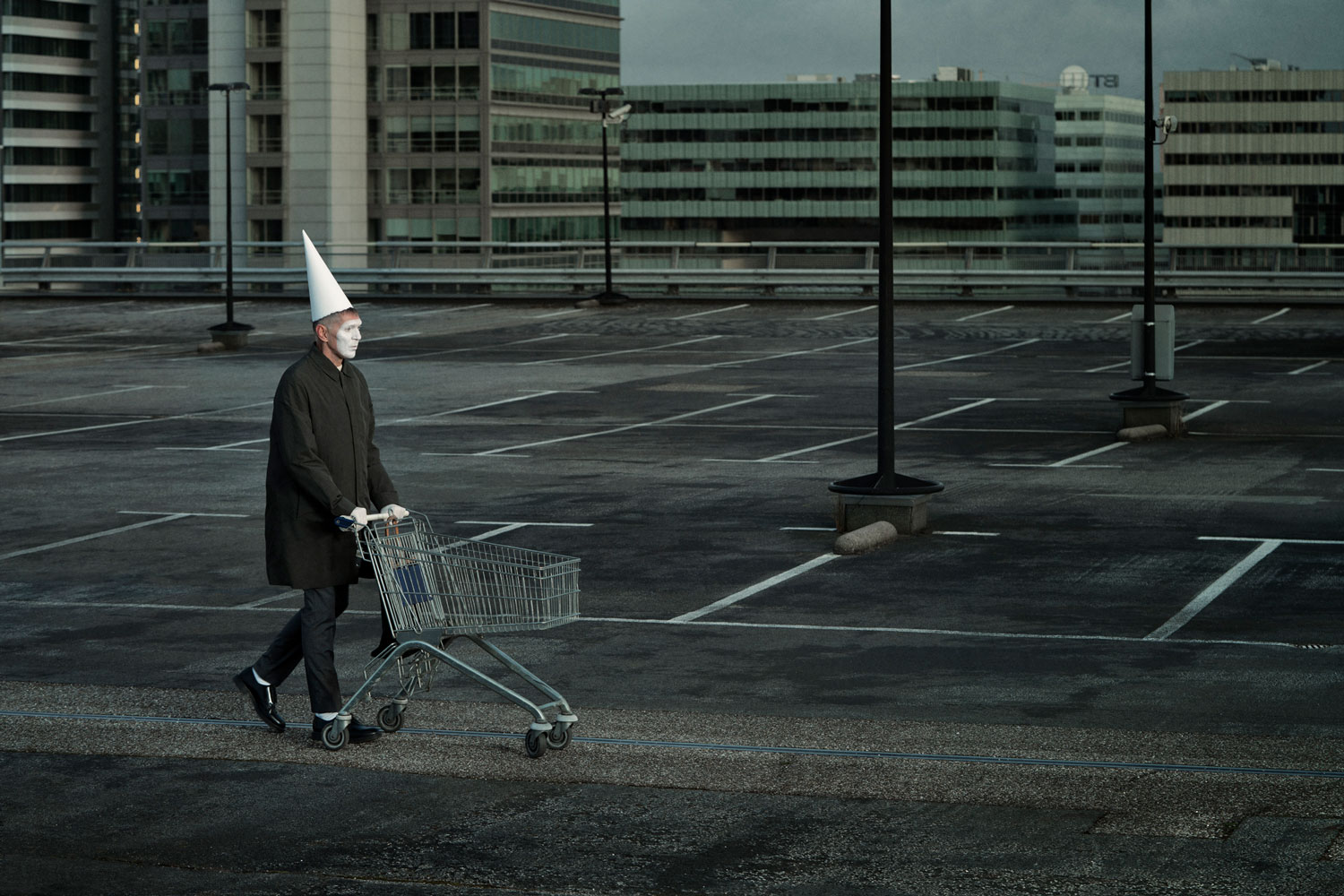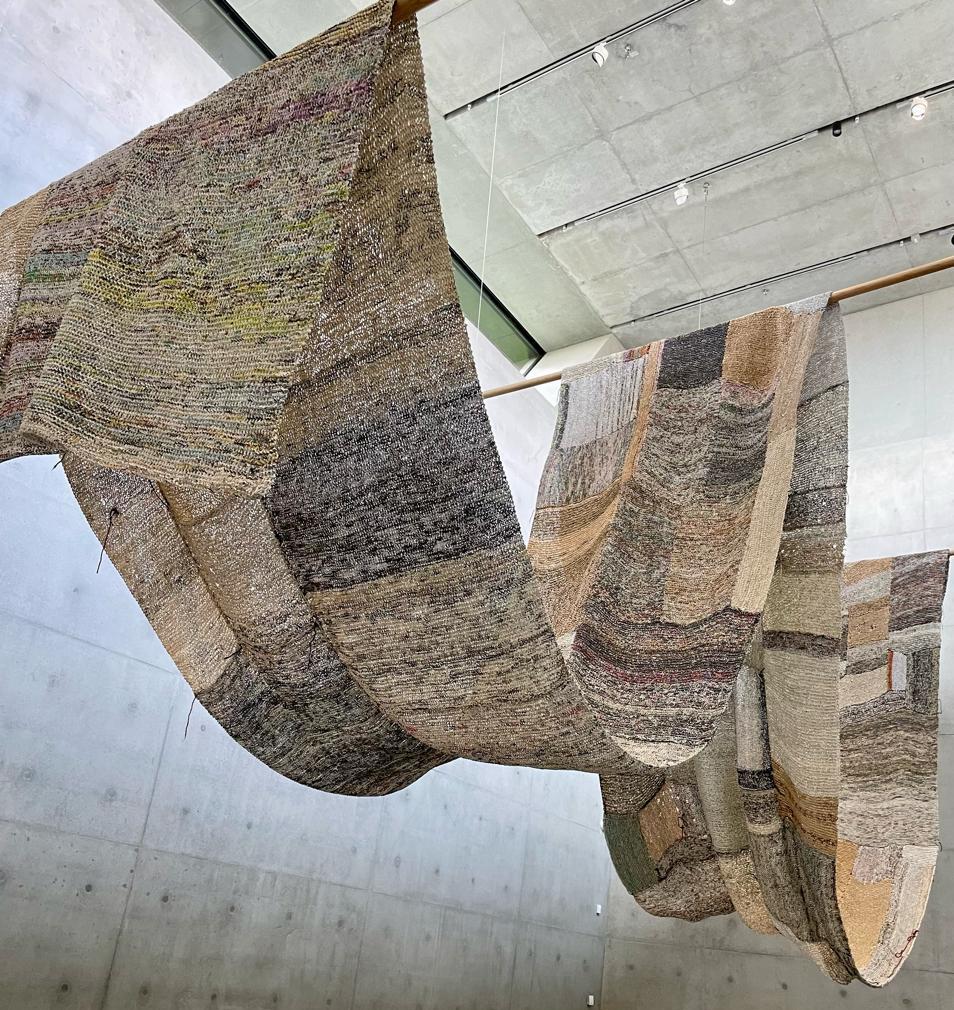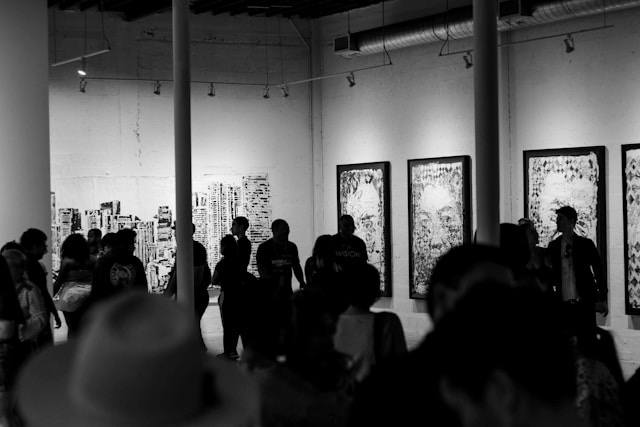“The supermarket shelves, emptied by hoarders, made me realise that for decades I have assumed that everything would always be there, that our dancing on the volcano’s edge would never end.”
Erwin Olaf
In the tone of a diary, Erwin Olaf recaptured the feeling that most of us endured during the last summer. An epidemic with unknown outcome, lockdowns which most of us never experienced, and supermarkets with empty shelves, somehow drastically enforcing the feeling that we are on the brink of something unheard of – a collapse of the system or just a bad dream which hopefully ends soon.
Olaf, who is one of Netherlands most famous contemporary artists and known for his polished yet somehow unsettling photos, dedicated the first room of his retrospective at Kunsthalle München to carefully arranged photos of the pandemic. We see Olaf dressed as a sad clown, pushing an empty shopping cart among a seemingly abandoned parking lot. Or, again wearing the harlequinesque hat, facing a wall made of concrete, the photo titled “April Fool 2020”.
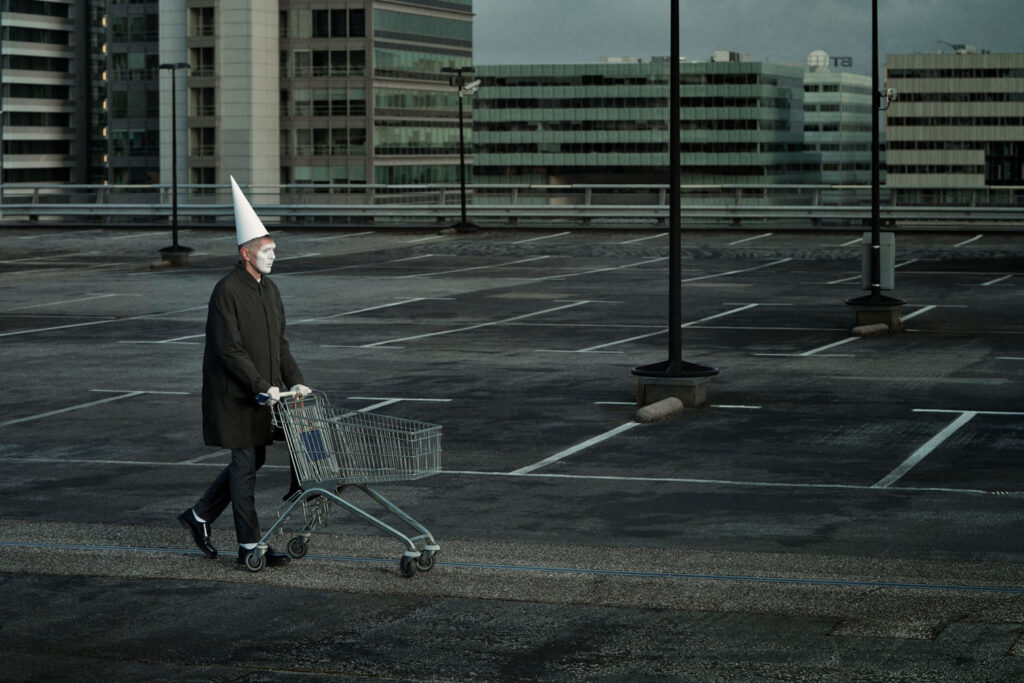
When Roland Barthes in his 1980 essay “La chambre claire” introduced the concept of the “punctum” in photography, he described it as an element of photography which brings the viewer out of balance: “I shall therefore call punctum, for punctum is also: sting, speck, cut, little hole—and also a cast of the dice. A photograph’s punctum is that accident which pricks me (but also bruises me, is poignant to me).” (Barthes: Camera Lucida)
This little injury, inflicted to the viewer by the photograph, seems especially present in these pandemic-related photographs. Rationally viewed there is no eminent danger in empty parking lots, but the context and the uneasiness leave the visitor unsettled.
This feeling of absence, of a hole, under the polished surface is a feeling that often creeps in the seemingly perfect depictions of scenes in Olafs photographs. Almost like a “horror vacui” which by all means has to be suppressed but finds its way to the surface.
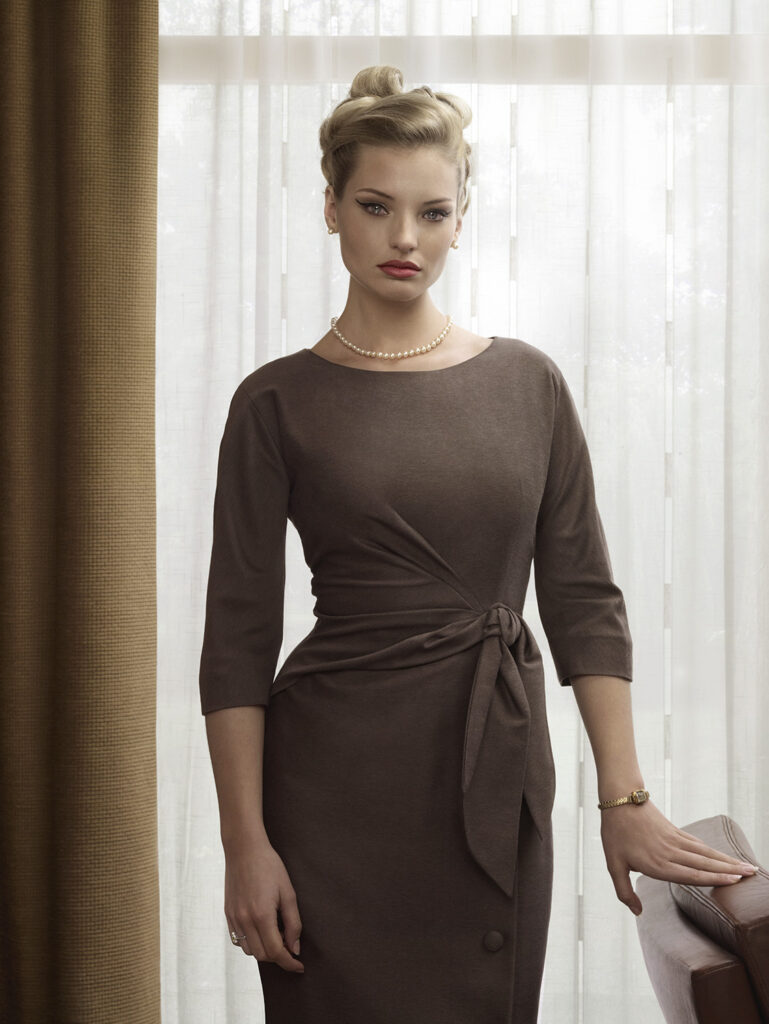
Taking inspiration from advertising and fashion photography, at first sight the perfection is almost daunting. So, upon looking longer, it becomes clear that the underlying artistic viewpoints express a thorough examination of societal questions such as equality and democratic values.
As the exhibition is a retrospective, we can be witnesses to Olaf’s first steps in his artistic career, snapping, in his own words, almost aggressive depictions of homosexuality against shadowed backgrounds, which makes the model stand out even more. Here he cites influences by old masters such as Rembrandt and Caravaggio.
Later, starting at the beginning of the new millennium, Olaf more frequently used digital techniques to alter the photographs by retouching. Although this gave the depictions a more artificial look, it also enhanced the artistic message by adding an uncanny atmosphere to the highly composed photographs.
In his recent works, besides the Covid-informed series, Olaf approaches new thematic fields such as nature. Visiting a Bavarian Lake with a sublime atmosphere, framed by the alps, he photographed people with a headscarf, in Lederhosen, tattooed and with a smartphone in their hand, ready to snap a picture. They could also be humans who make the impression of being refugees, maybe coming from the south across the border into Germany. And there it is again, the punctum which is so present in his work.
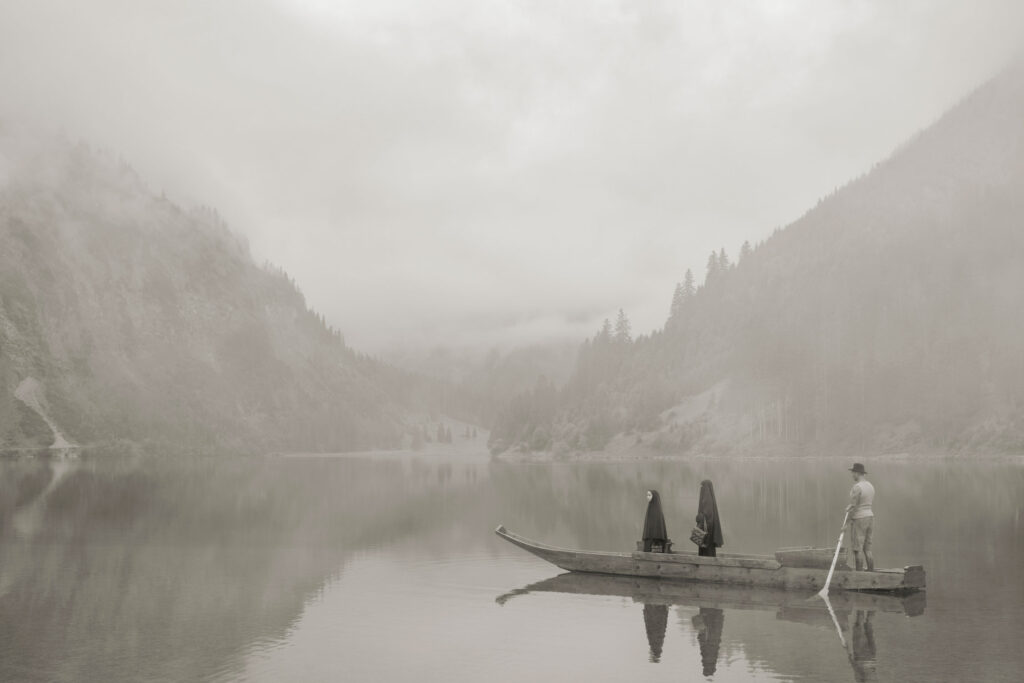
This also shows the great achievement the retrospective accomplishes – giving a deep insight into the Œuvre of Erwin Olaf, accentuating artistic developments he underwent in his career and highlighting recent works, which have not yet been showed to the public.

